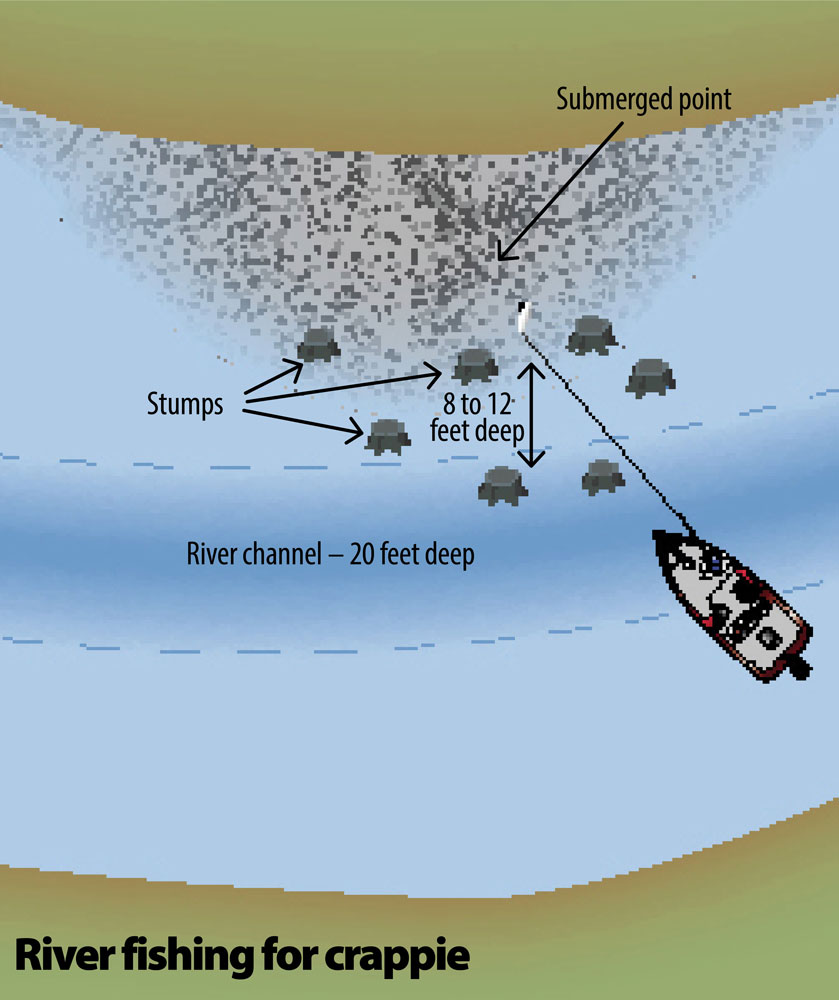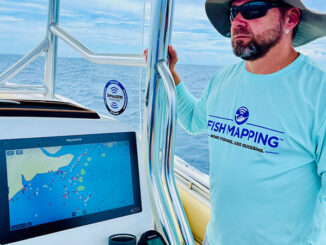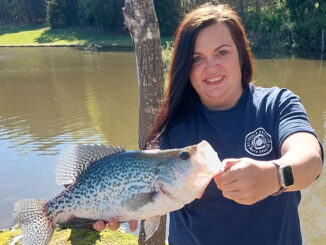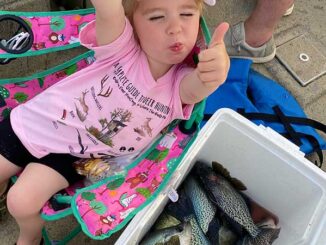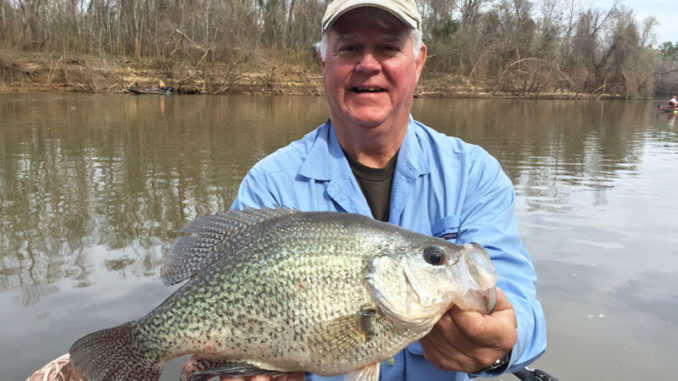
Crappie in river systems across the Carolinas get a bit of a jump on their reservoir-bound brethren as spring approaches. Don’t wait too late to fill your cooler this month.
Anglers across the Carolinas are chomping at the bit for spring to arrive and with it, better fishing conditions — none more so than dedicated crappie fisherman. While many will wait for the nearest reservoir to warm, two guides believe rivers fire up faster, spurring crappie on to prespawn conditions and feeding time ahead of schedule.
A key difference concerning the water temperature in river systems is that the water’s depth and breadth is less than a lake, resulting in faster warming. Not to mention that the current mixes the water on the surface — warmed by the son — with the cooler water below. In addition, deeper water is close at hand in case of a cold snap, giving fish the courage to test the shallows a little earlier. While these conditions bring fish to the beds faster, our guides don’t wait that long.
“You can catch fish on the bed in late February all the way up until the end of March in the rivers,” said Joe Dennis, a Bonneau, S.C., resident who runs Captain J Hook Charters and fishes the Santee and Cooper river systems. “But, I’m catching the biggest fish before they go on the actual bed. The bucks come in and make the nest, and the bigger females hang off in a little deeper water — that’s where I’m catching them.
“I start catching most of my crappie when the water starts hitting 56 degrees and rising and the bite on numbers of your 2-pound-plus fish is 60 to 64 degrees and rising.”
But anglers will have to tinker with techniques to be successful due to the schematics of a river and moving water. Most are contained by steeper banks that prohibit typical spawning depths, pushing fish to bed in 4 to 10 feet of water, with the bigger females hanging on the first ledge beyond that. Fish will cling to cover, which isn’t unusual, but with the current it becomes a necessity — and that’s a good thing.
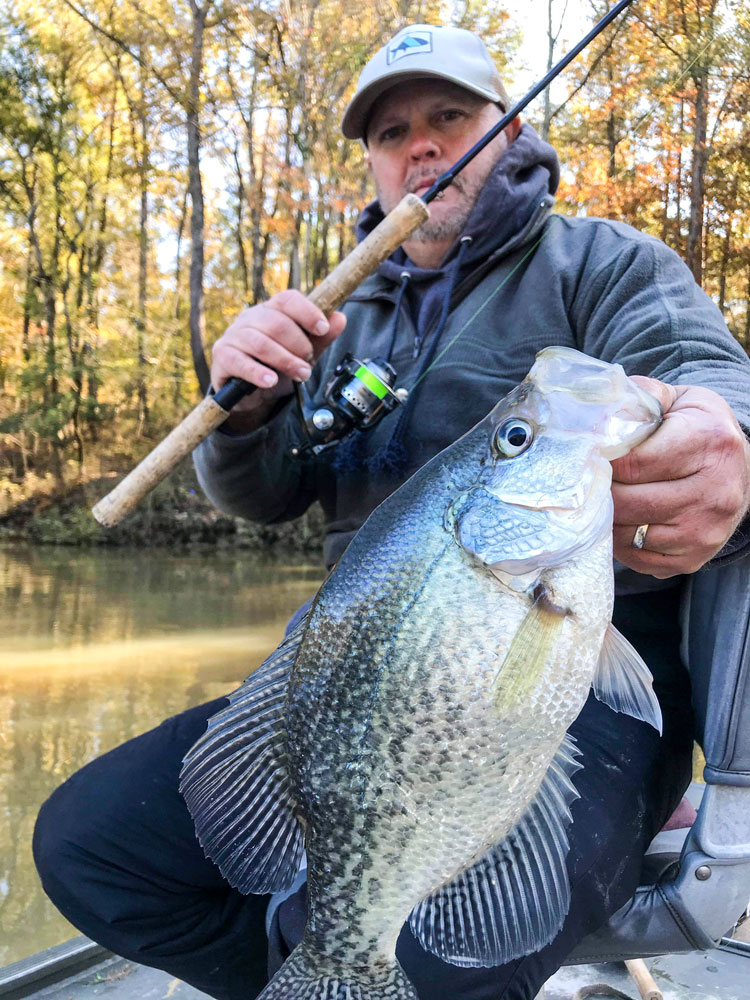
“You’re gonna find more fish congregated in the river,” said Dennis (843-245-3762), whose show Father and Son Outdoors TV airs on the Pursuit Channel. “The current and that structure centers them in — in the lake, they tend to scatter. You can sometimes catch a limit around one little bush, stump or tree. I’m looking for bends and little eddies that have ledges and these individual pieces of cover in them. They’re not going to be in the fast current.”
Having found a suitable site, Dennis fan-casts a lime or chartreuse, 1/32-ounce Rockport Rattler jighead with either a green/ glitter or black/chartreuse grub. Then, he counts it down to where he believes the top of the structure is and begins a slow retrieve. In the cooler water, the bite is light, so he uses a 4-pound Slime Line, a high-visibility monofilament, to notice the slightest takes.
An important note in the river system is the nearest adjoining reservoir. The rivers Dennis fishes are downstream of the dams that impound the Santee Cooper lakes, Marion and Moultrie, with saltwater farther downriver, meaning the fish he catches are residents of the river. On the other hand, guide Eddie Moody of Roxboro, N.C., fishes the Eno River near Durham, which flows into Falls of the Neuse Lake. While a certain percentage of Eno River crappie are likely residents, Moody, who runs Slab’s Guide Service, believes that many follow shad upriver from the lake as the water cools in the fall, feed through the season, and spawn in early spring as water temperatures reach a prespawn level before the lake.
“The crappie are going to travel with the grocery store — with the shad,” said Moody (984-363-5256), “and since the river is a smaller body of water, it’s going to warm up faster. The feeding up process here might be 30 to 60 days earlier than in the lake.”
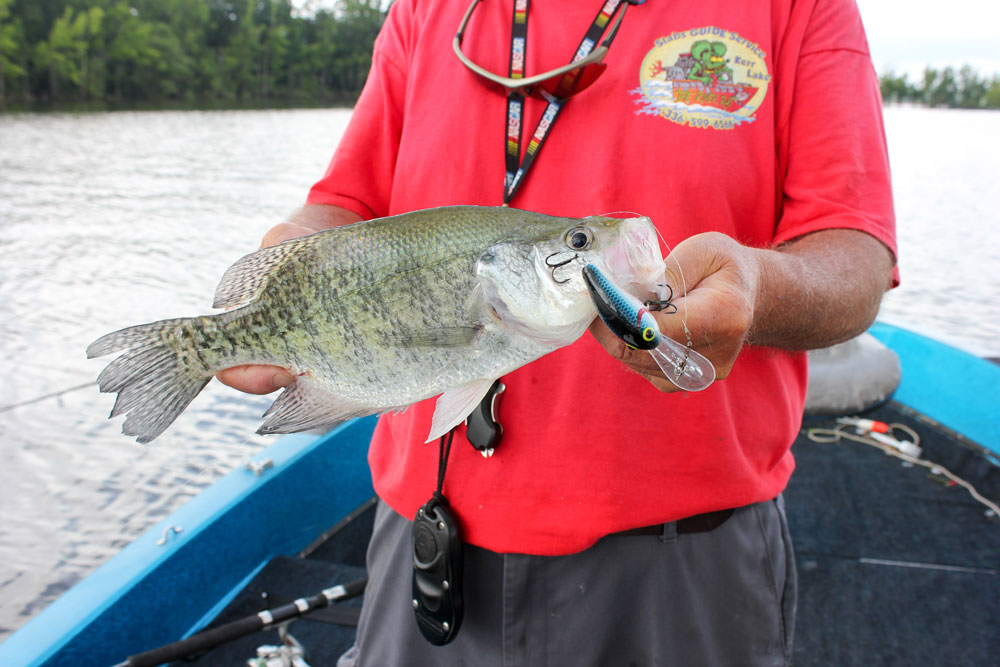
Like Dennis, Moody starts catching fish when water temperatures reach the mid 50s, which is usually late February to March. This gives him a chance to catch fish ganged up on cover rather than seeking out bedding fish in the expansive spawning flats that rivers in low-lying areas like the Eno, contain.
“If you wait until the water reaches 68 degrees — you’ve missed it,” said Moody. “Looking for fish in the spawning areas is like looking for a needle in a haystack; there’s just not a big concentration. We like to run the drops on the edges of the river channel where the shallow flats are. In an area where the flat is 2 feet deep and the channel is 20, the bigger females will generally be in 8 to 12 feet, on the edge. We cover ground and look for areas that hold numbers, usually those with a row of stumps or some kind of cover on the drop. Then, we’ll go back and work those areas.”
Moody, a traditional long-line troller, uses this favored method to locate crappie hot spots. Taking advantage of active fish, he trolls minnow-tipped Bobby Garland Strollers and Road Runners between 1 and 1.2 mph. When he encounters a good bite, he takes notes of the area — not just the location, but the terrain and how high the cover reaches to the surface. Then, he returns to work the area over with jigs and slip-corked minnows.
Although the Santee, Cooper and Eno rivers are excellent models, they only scratch the surface of available moving water. North Carolina’s Cape Fear, Flat, Trent, Neuse and Tar-Pamlico are good crappie fisheries, as well as tributaries of the Albemarle Sound. The Waccamaw, Wateree, Congaree, Combahee and Ashepoo rivers are good moving-water crappie fisheries in South Carolina.
 Crappie in black and white
Crappie in black and white
The majority of crappie that anglers in the Carolinas catch from rivers will be black crappie, in part because the percentage of black crappie is higher than white crappie, but because the two subspecies spawn at slightly different temperatures. With winter patterns in recent years proving that winter can become spring in a week’s time, more and more anglers are seeing black and white crappie intermingling.
“Years ago, there was a gradual transition from winter to spring,” said guide Eddie Moody of Roxboro, N.C., “but for the last couple of years, it’s been like flipping a switch. It’s 40 degrees one day and 60 the next. That’s why the black and white crappie are coming in together. They used to come in 2 to 4 weeks apart, with the white crappie coming in first. The black crappie will travel in a suspended fashion, while the white crappie tend to relate more to the bottom.”
According to the N.C. Wildlife Resources Commission website, black crappie spawn at between 60 to 68 degrees, while white crappie spawn between 58 and 64 degrees.
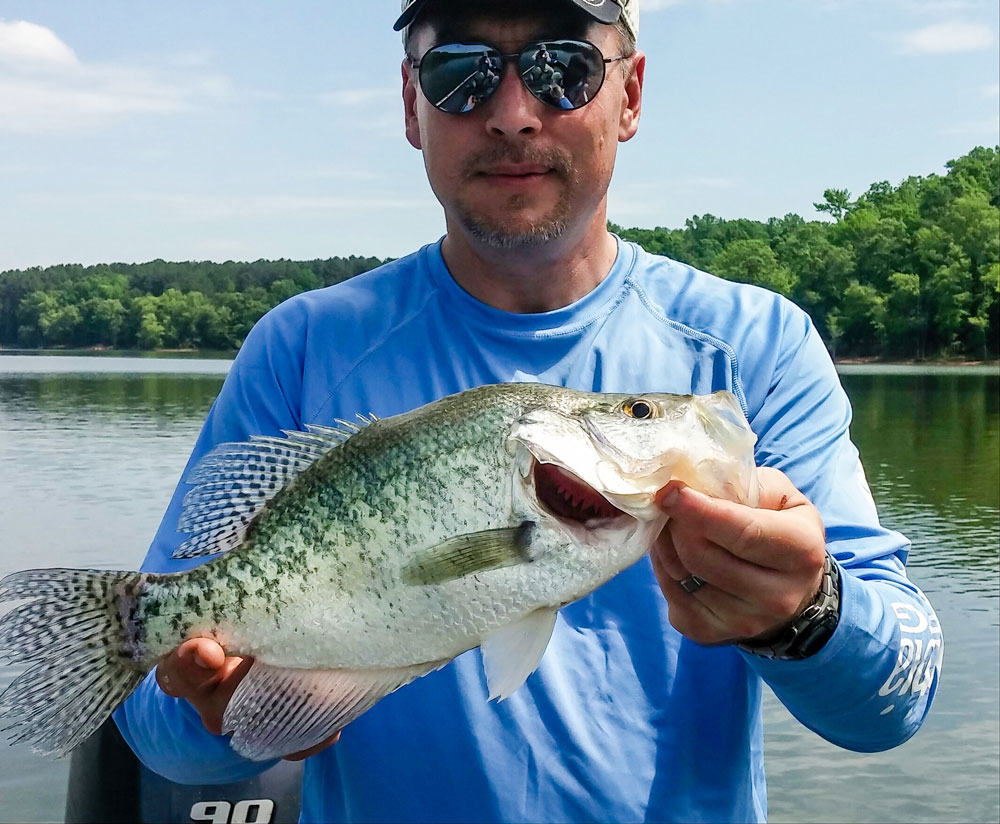
That isn’t the only difference between the two sets of slabs. Black crappie tend to spawn in gravel or soft, muddy bottoms, and white crappie are more likely to be found spawning near cover such as brush, stumps or rocks.
Although the most-distinguishable difference between the two is the vertical bars often found on the whites, water conditions can affect the fish’s coloration and make them difficult to see. The only way to be certain is to count the dorsal spines. Black crappie will have 7 to 8 spines; whites will have 5 to 6.

